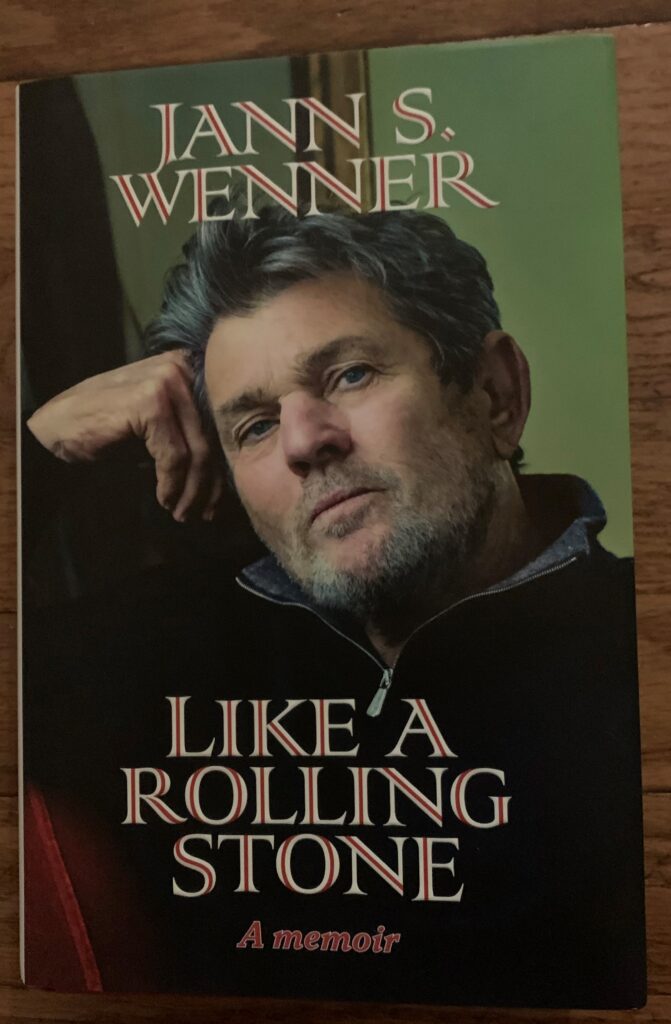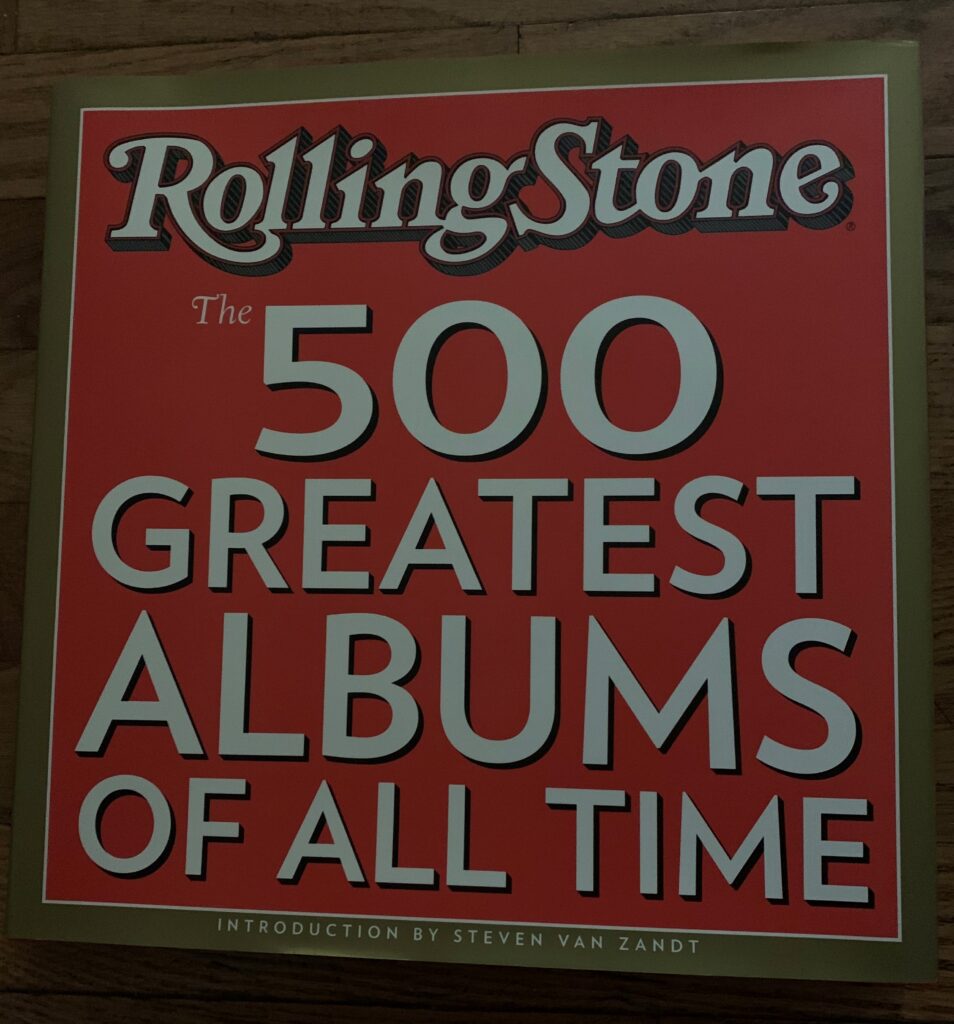
It’s almost cheesy, but he had to do it. It’s the only possible title for the autobiography of Jann Wenner; founder of Rolling Stone magazine. The man who voiced a generation and stole his magazine’s name from Dylan and Jagger. Like A Rolling Stone is a personal history of the magazine and his life. The magazine, from its inception as a folded newspaper to a glossy large format. His life, from the young, cool rock and roll executive to the ailing senior citizen still clinging to the ideals of the ’60s and ’70s.


He launched Rolling Stone in 1967 with John Lennon the first of innumerable provocative covers. I have hundreds of them, including an excellent condition issue with the iconic John and Yoko photo in 1981. The Beatles, either individually or collectively, have been on the cover more than 30 times. Many cover photos were taken by Annie Leibovitz, who Wenner hired as an unknown photographer in 1970. The 1,000th issue cover in 2006, modeled after that of Sgt. Pepper’s Lonely Hearts Club Band, cost over $1M. Sometimes a controversial cover would be met with intense backlash, none more so than the cover of the Boston Marathon bomber. Being on the cover of the Rolling Stone was a coveted prize for any artist, enshrined facetiously by Dr. Hook and the Medicine Show’s “The Cover of the Rolling Stone” in 1973. The covers are a photo album through the history of pop culture. Wenner was behind every one of them and shares the inside stories.
While the covers portray the magazine’s popular culture focus, “it was not just about music, but the things and attitudes that music embraces.” Wenner employed an all-star lineup of political writers, investigative journalists, and authors: Jon Landau, Tim Cahill, P.J. O’Rourke, Matt Taibbi, Tom Wolfe, Rob Sheffield, Truman Capote, and Hunter S. Thompson. Wolfe’s Bonfire of the Vanities and Thompson’s Fear and Loathing in Las Vegas were first published in Rolling Stone. Wenner’s drug-fueled, middle-of-the-night brain-storming escapades with wild man Thompson are a highlight of the book. John Goodell and Bill McKibben have provided years of perceptive and cautionary analysis on the impacts of climate change and other environmental issues. Rolling Stone writers turned Altamont, Manson, Patty Hearst, Exxon Valdez, General McChrystal, El Chapo, and many more subjects into award-winning features. The magazine’s reputation for integrity took a major hit in 2014 for its University of Virginia rape case reporting. Their trusted fact checking failed them. The young woman made it all up.

Wenner hung out with a lot of famous people. He formed longtime close relationships with Jagger, Jackie Onassis, JFK Jr., Bette Midler, Michael Douglas, Lorne Michaels, and the Hearst family. His high-flying (literally high on drugs in his private jet) social life among the rich and famous entailed exotic locales, luxurious private villas, and the finest restaurants. After a while, the braggadocio becomes a celebrity name-dropping exercise, but there is some good gossip from the world of opulence.
Despite its 564 pages, the book’s short (3-5 pages) chapters make it a quick read. The fragmented structure reads more like a blog as it jumps from story to story. Thankfully, it maintains a chronological order. Wenner doesn’t get too introspective, even when discussing personal issues such as his drug use, marriage, sexual orientation, and severe health issues. Like a Rolling Stone is a must-read for longtime readers of the magazine and fans of the Rock and Roll Hall of Fame like me. (Wenner founded the Rock and Roll Hall of Fame along with Ahmet Ertegun in 1983. He was inducted into the Hall by Mick Jagger in 2004.) Baby boomers will enjoy his adventures with classic rock royalty: Jagger, Dylan, Springsteen, Lennon, and many more. For the rest of you, I’m not sure there’s enough substance to draw you in. That’s disappointing.
D² Rating ◼◼◼☐☐
Trivia: What outdoor magazine did Jann Wenner co-found in 1977 (along with the grandson of William Randoph Hearst and son of Gerald Ford)?
Answer: Outside (Wenner sold the magazine in 1979 about the time my college roommate brought home an issue. I’ve read every issue cover-to-cover since then.)